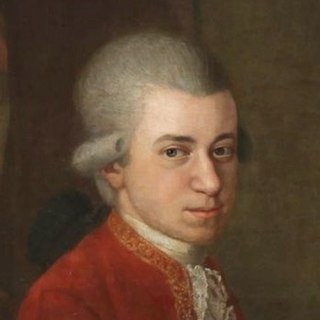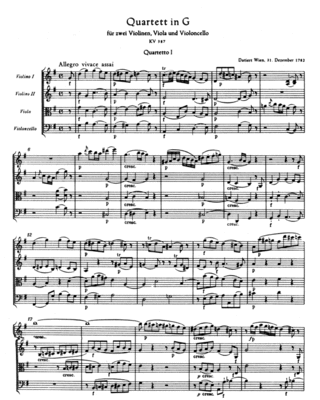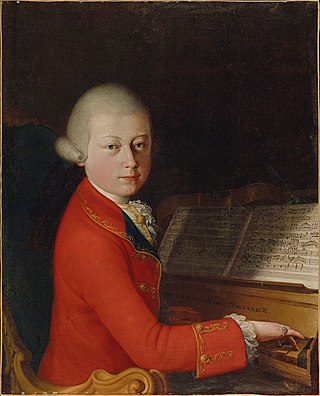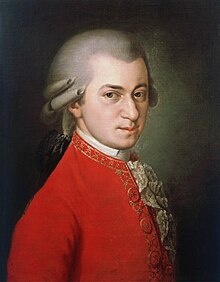
Ludwig van Beethoven's Symphony No. 1 in C major, Op. 21, was dedicated to Baron Gottfried van Swieten, an early patron of the composer. The piece was published in 1801 by Hoffmeister & Kühnel of Leipzig. It is not known exactly when Beethoven finished writing this work, but sketches of the finale were found to be from 1795.

The Symphony No. 104 in D major is Joseph Haydn's final symphony. It is the last of the twelve London symphonies, and is known as the London Symphony. In Germany it is commonly known as the Salomon Symphony after Johann Peter Salomon, who arranged Haydn's two tours of London, even though it is one of three of the last twelve symphonies written for Viotti's Opera Concerts, rather than for Salomon.

The Symphony No. 38 in D major, K. 504, was composed by Wolfgang Amadeus Mozart in late 1786. It premiered in Prague on January 19, 1787, during Mozart's first visit to the city. Because it was first performed in Prague, it is popularly known as the Prague Symphony. Mozart's autograph thematic catalogue records December 6, 1786, as the date of completion for this composition.

The Symphony No. 39 in E♭ major of Wolfgang Amadeus Mozart, K. 543, was completed on 26 June 1788.

Symphony No. 35 in D major, K. 385, also known as the Haffner Symphony, was composed by Wolfgang Amadeus Mozart in 1782. It was commissioned by the Haffners, a prominent Salzburg family, for the occasion of the ennoblement of Sigmund Haffner the Younger. The Haffner Symphony should not be confused with the eight-movement Haffner Serenade, another piece Mozart wrote on commission from the same family in 1776.

The String Quartet No. 14 in G major, K. 387, nicknamed the "Spring" quartet, was composed by Wolfgang Amadeus Mozart in 1782 while in Vienna. In the composer's inscription on the title page of the autograph score is stated: "li 31 di decembre 1782 in vienna". The work was perhaps edited in 1783. This is the first of the Haydn Quartets, a set of six string quartets he wrote during his first few years in Vienna and dedicated to Joseph Haydn.

The Symphony No. 52 in C minor is one of the last Sturm und Drang symphonies composed by the Austrian composer Joseph Haydn while the composer was in residence at Esterházy in 1771 or 1772.
The Symphony No. 25 in G major, Perger 16, Sherman 25, MH 334 is a classical symphony that was composed by Michael Haydn in 1783, with a completion date of May 23. It is scored for flute, 2 oboes, 2 bassoons, 2 horns and strings.
Michael Haydn's Symphony No. 26 in E-flat major, Perger 17, Sherman 26, MH 340, written in Salzburg in 1783, was the first of the only three symphonies published in his lifetime. It was one of several E-flat major symphonies attributed to Joseph Haydn.
The six String Quartets, Op. 76, by Joseph Haydn were composed in 1797 or 1798 and dedicated to the Hungarian count Joseph Georg von Erdődy (1754–1824). They form the last complete set of string quartets that Haydn composed. At the time of the commission, Haydn was employed at the court of Prince Nicolaus Esterházy II and was composing the oratorio The Creation as well as Princess Maria Hermenegild Esterházy's annual mass.
Michael Haydn's Symphony No. 3 in G major, also known as Divertimento in G major, Sherman 3, MH 26, was written in Oradea in 1763, according to the Göttweig catalog. It is not listed in the Perger catalog. Wolfgang Amadeus Mozart's Salzburg Symphonies (K136-138) are examples of symphonies that were also called divertimenti.

The Serenade for Orchestra No. 9 in D major K. 320, Posthorn, was written by Wolfgang Amadeus Mozart in Salzburg, in 1779. The manuscript is dated 3 August 1779 and was intended for the University of Salzburg's "Finalmusik" ceremony that year.

Symphony No. 19 in E-flat major, K. 132, is a symphony composed by Wolfgang Amadeus Mozart in July 1772.
The Milanese Quartets, K. 155–160, are a set of six string quartets composed by Wolfgang Amadeus Mozart in late 1772 and early 1773 when he was sixteen and seventeen years old. They are called 'Milanese' because Mozart composed them in Milan while he was working on his opera Lucio Silla. Before this set was composed, Mozart had written one earlier string quartet, so these six quartets are numbered from No. 2 to No. 7. The quartets are written in a plan of keys of D–G–C–F–B♭–E♭ following the circle of fourths.
The six string quartets, K. 168–173, were composed by Wolfgang Amadeus Mozart in late 1773 in Vienna. These are popularly known as the Viennese Quartets. Mozart may have hoped to have them published at the time, but they were published only posthumously by Johann André in 1801 as Mozart's Op. 94.

Josef Triebensee (Trübensee) was a Bohemian composer and oboist.
Felix Mendelssohn wrote thirteen string symphonies between 1821 and 1823, when he was between 12 and 14 years old.. These symphonies were tributes to Classical symphonies especially by Joseph Haydn, Carl Philipp Emanuel Bach, and Wolfgang Amadeus Mozart.
Joseph Haydn's String Quartets, Op. 64, is a set of six string quartets composed in 1790. Along with six earlier quartets published under the opus numbers 54 and 55, they are known as the Tost quartets, after the Hungarian violinist and later merchant Johann Tost who helped Haydn find a publisher for the works. Unlike the earlier quartets, Haydn actually dedicated the Op. 64 set to Tost in gratitude for his efforts.
The divertimenti in F major, B-flat major, E-flat major, F major, and B-flat major are five companion compositions for pairs of oboes, horns and bassoons by Wolfgang Amadeus Mozart.











